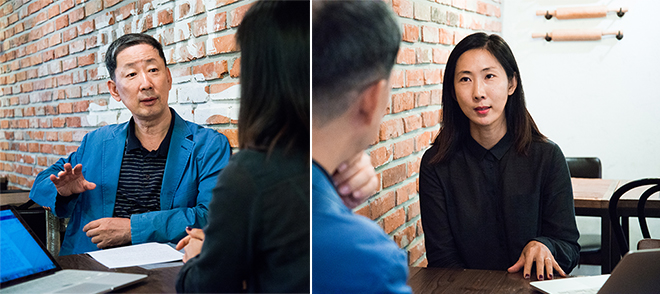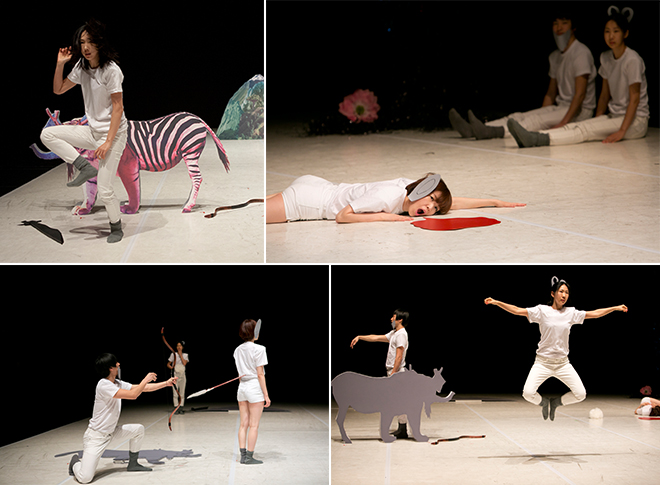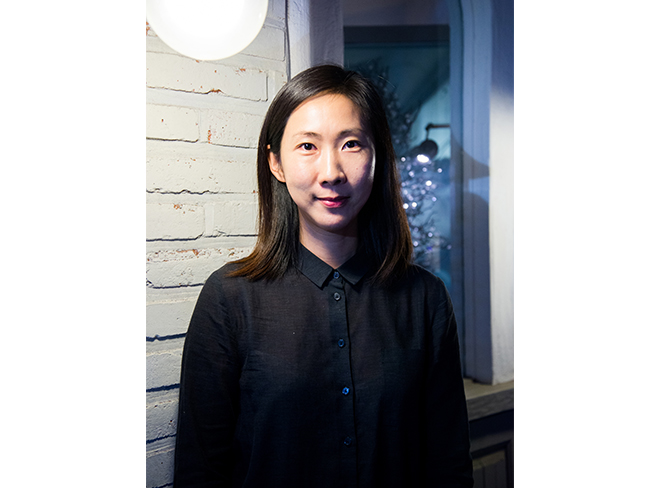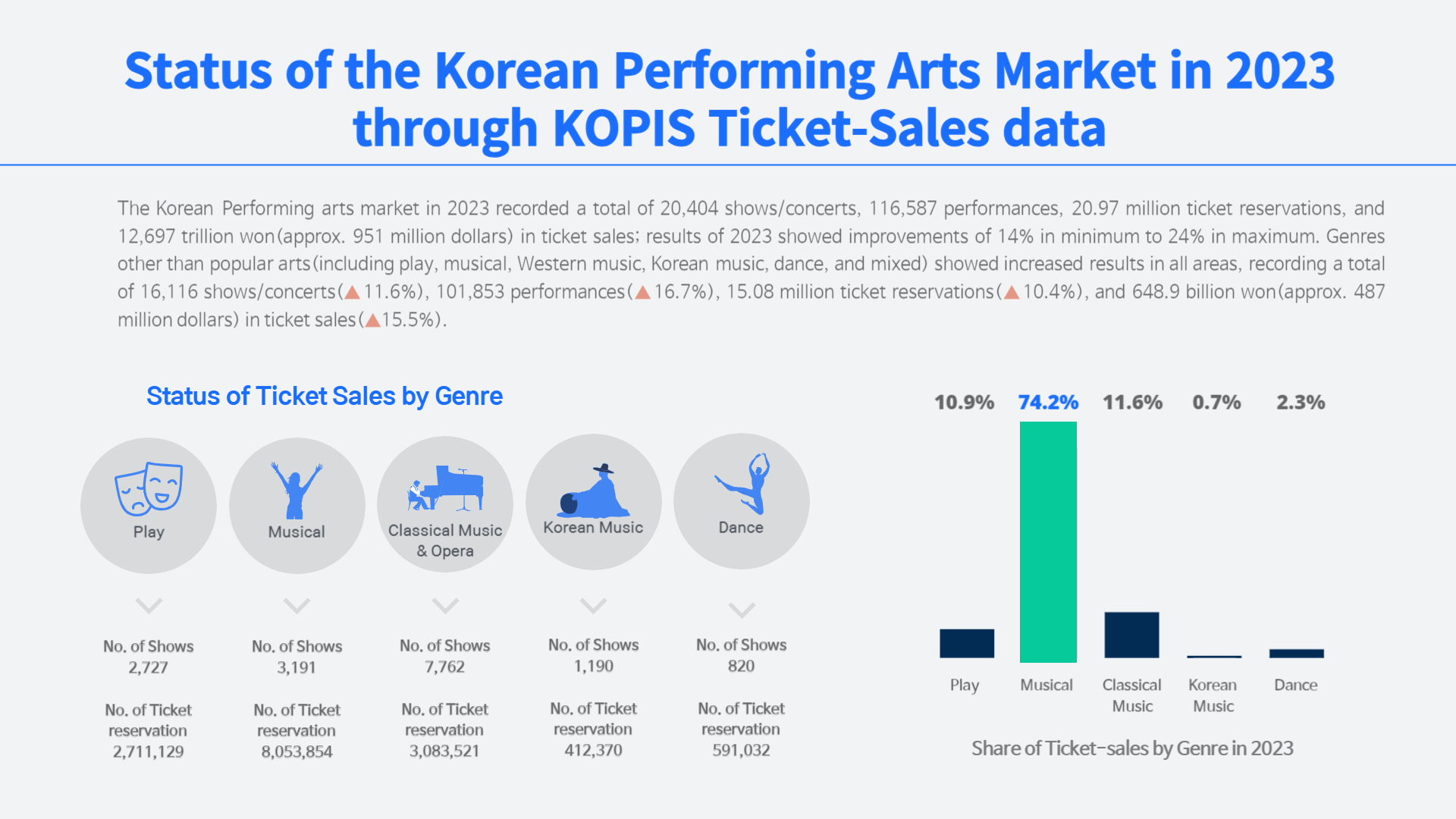A Dancer Who Resists Self-exoticization
Choreographer LIM, Jee-ae is also an unmistakable storyteller. She adopts an intellectual approach to her dance material, conducting extensive research into the historical background and conceptual foundations of her sources as a necessary step in bringing her works to completion. Her viewers should not expect the visually beautiful, orderly movements of other dance performers in Lim’s work. Her style is far from sensual.
Does Lim consider herself someone who challenges binary modes of thought? Her pieces “Good and Evil,” “Male and Female,” and “God and Mankind” certainly hint at a resistance of such notions. Her New Monster, nominated for PAMS Choice at this year’s Performing Arts Market in Seoul (PAMS), also reflects a similar sentiment. Lim’s works can be puzzling for those who are used to seeing the world through a “this or that” paradigm. They are ambiguous and not easy to digest.
Within this ambiguity, though, Lim’s works resonate as lingering traces in her audiences’ minds, provoking thoughts and questions. It is for this reason that her works have received high praise. I met with Lim, who is currently based in Germany, at a Daehangno café on September 21 to discuss her aesthetics and works such as New Monster.
|
| |
| ▲ The author with choreographer LIM, Jee-ae © LEE, Kang-hyuk | |
Congratulations on being selected for PAMS Choice for New Monster. Share with us some of your expectations for PAMS.
I had been hoping for a chance to perform more runs of New Monster, so I was overjoyed to be selected. I would love for this to be an opportunity to bring the piece to more audiences in other places and also of other cultural backgrounds.
What kind of work is New Monster, and what is the main idea you wish to convey with this piece?
This premiered at the 2013 HanPac Rising Star Program1) held at the Main Hall of the ARKO Arts Theater in March of that year.
New Monster borrows various elements of mythology and explores how these images might be distorted and remade. The characters are ambiguous, neither man nor animal, nor of a clear gender. Mythology is actually strongly dichotomous, steeped in the time-old, conventional patterns of good versus evil, man and woman, god and man. I pondered what relevance these concepts could be said to have in our modern age. I felt an urge to move away from binary notions and stay fully in a kind of middle space. For instance, the animals that emerge in this story aren’t actually animals but a form somewhere between man and woman. I am drawn to this ambiguous gray area and wanted to explore more of this in my work.
I wasn’t looking to make a statement to an audience. I wanted to find what might problematic in the things familiar to me, and this desire spurred me on and became the process from which this work emerged.
Before getting into more specific questions, could you first give us a quick self-introduction?
I began dancing in middle school, when I was fifteen years old, which was considerably later than other dancers who start out very young. It wasn’t so much the movement of dancing that attracted me but its form, I think. I was mesmerized, for example, by the unique forms observable in traditional Korean dance, like the shapes of the dancer’s heads and the costumes and the motions, and I wanted to immerse myself in it. From Anyang Art High School, I went on to major in Korean dance at Kyung Hee University, and then joined the Seoul Performing Arts Company after graduation. Until then, all my experience was in Korean dance. By chance, I ended up joining the Ahn Ae-soon Dance Company, which was the beginning of my career in contemporary dance. In 2011, I left to do my Master of Arts in Solo/Dance/Authorship (MA SODA) at the Inter-University Centre for Dance Berlin.
1) A platform that showcases the most promising next generation of choreographers. Organized by the Korea Performing Arts Center (integrated with Arts Council Korea on May 29, 2014).
|
| |
| ▲ “New Monster” ©Jeeae Lim | |
I heard you performed New Monster in Germany. How was it received there?
It was my first time performing in Germany after finishing graduate studies, outside of the school, but it earned me a place among the “Notable Artists of 2014” selected by Germany’s biggest dance magazine Tanz. I wasn’t aware of this initially and eventually heard about it from other people. I think because my roots are in traditional Korean dance, German audiences found my pieces different. I draw a lot from traditional themes, but I guess Europeans have their own mental images about what is “traditionally Asian.” I heard some of the audience say that my show had completely overturned their preconceptions.
In my opinion, your works might be rather difficult for the average audience to understand and enjoy. I’m sure you have some thoughts on how contemporary dance doesn’t always appeal to a popular audience. How do you think contemporary dance can and should be made more accessible to audiences?
I myself found contemporary dance difficult when I was learning it, and I still do. I’ve worked in Berlin for almost five years now, but contemporary dance there is difficult to grasp. I was very confused at the beginning. While it is slightly better now, I still concur that it is not an easy genre to understand.
I don’t usually think of my audiences when working on a piece, not because I don’t value them but because I prefer to focus entirely on my work. I’m grateful when audiences appreciate this. When you think about it, a piece of art is a process that begins with a whole series of ideas at the planning stage, which evolve through research, and only come together as a finished work over the course of interactions with other ideas and subjects. Considering this, it’s fundamentally impossible for an audience to understand your piece merely through the one or two hours that they engage in your show.
These days, artists are less likely to assert certain positions or opinions through a piece. An art piece is not the means to convey your own ideas. Rather, it’s something through which a point of view becomes less understandable. But regardless, we can connect and respond in a variety of ways.
Would you say your work falls into the category of conceptual dance?
Personally, I think the idea of the “conceptual” in dance is still rather vague, so I feel uncomfortable using the term. I do use it occasionally, though, for lack of a better word.
It’s apparent that a lot of dancers have been heavily influenced by conceptual dance as it is practiced in Europe. For me, conceptual dance is less about the style of the work than the artist’s attitude. Artists have to reject conventional ideas and experiment with new approaches, leaving their comfort zones and pushing themselves to develop. When it comes to defining what constitutes conceptual dance, I prefer to leave that to the audience. Having to define it myself would be like digging my own grave.
What issues nowadays are you interested in incorporating into your performances?
My journey with dance has always involved questions about institutionalized traditional customs and ideas. Right now, the focus of these questions has shifted to “putting the brakes” on the contemporary through the traditional. In my current study of the historical context of Korean dance as well as my experience as a foreigner living in Europe, a lot of questions have emerged that have affected my work: How does the selective memory of tradition, history, and the past meet the present, and what kind of relationships does this give rise to? How did the self-exoticization and otherizing prevalent in the late colonial and modernization period generate stereotypical and clichéd notions of the Eastern world and come to dominate the culture of the time? Is a dancing body a mere passive subject etched with specific cultural memories or a subject with the potential for self-restructuring and self-guided performance? I’m hoping to “perform” these questions by re-choreographing traditional Korean dance pieces.
Can you say more about the concept of self-exoticization?
It arose after the period of colonialism and Western imperialism, and it describes how people in the East conform themselves to the distorted perceptions people have of them. There are reports that when the legendary modern Korean dancer Choi Seung-hee toured the United States and Europe, the curators in these countries reportedly requested that she satisfy their idea of the Oriental image, leading Choi to declare upon her return to Korea, “Eastern dance is something I found I could import from the West.”
It is within this context that I speak of avoiding self-exoticization. I see a lot of artists increase the commercial value of their works in the art market by appealing to this appetite for exoticism. This is a problem that can be attributed not only to artists but also to the outlooks of curators.
|
| |
| ▲ Choreographer Jeeae Lim ©Lee Kang-hyuk | |
Thank you for taking time out today to share so many interesting thoughts with me. As a final point, can you share with us your plans for the near future?
I am currently working on a project called Conversations with Korean Dancers as part of an artist residency with the Seoul Dance Center. I plan to showcase this piece on October 13. I have also been invited as choreographer to participate in a workshop during which I will create a piece with dancers from eight Asian countries. This will be at Gwangju’s Asia Culture Center, and this project will basically be an extension of my work. Most of the participating artists I will be working with started their performing careers with their own traditional dance and later ventured into Western dance forms for various reasons. Moving from traditional into contemporary, both in terms of technique and also emotionally or psychologically, they likely experienced some internal dissonance and discomfort. I felt that way too. I suspect these dancers have all had the experience of self-exoticization or otherization, and I want to address these issues through this project. Our work will be performed in Gwangju from November 19 to 20, and after that, I’ll return to Berlin to start my research for a work I plan to present next year, Ah~ Ah Ah.











 PREV
PREV

.jpg)
.jpg)
.jpg)
.jpg)











